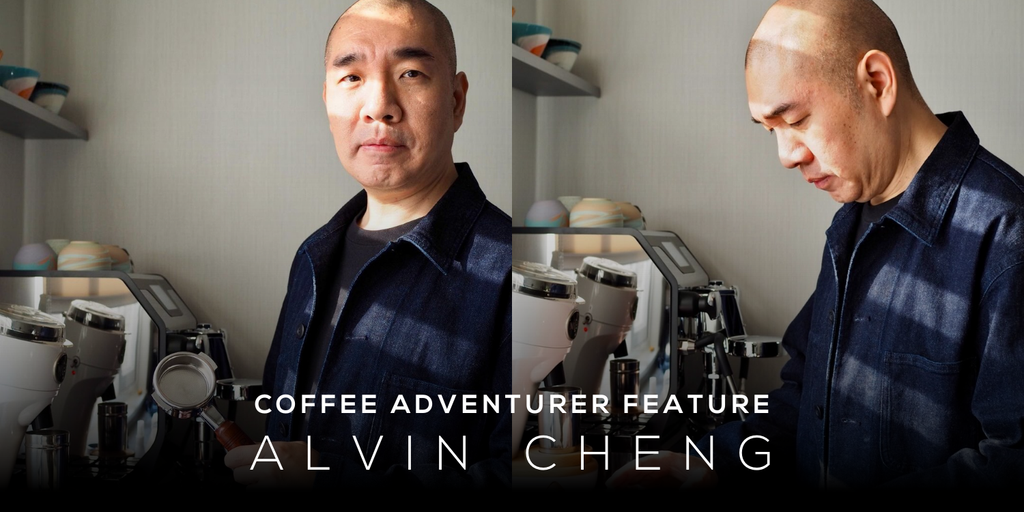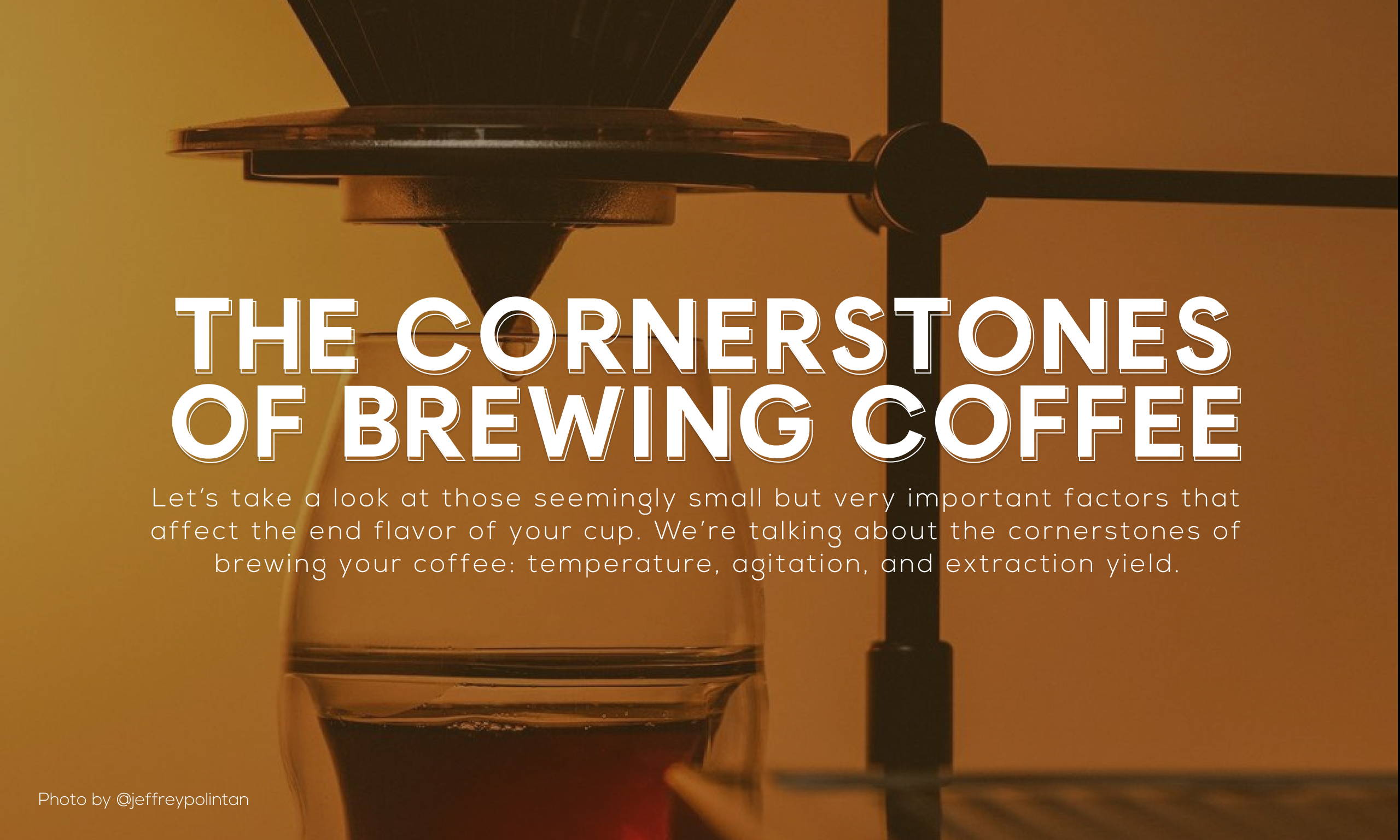
We’ve talked extensively about terroir, various roasting processes, and the many ways you can brew your coffee. Now it’s time to take a look at those seemingly small but very important factors that affect the end flavor of your cup. We’re talking about cornerstones of brewing your coffee, which includes the temperature, agitation, and extraction yield.
These terms may or may not be new to you. Perhaps, you’ve even considered them as small details that you just tend to gloss over. But you’d be surprised at how controlling these variables contribute to the final taste of your coffee. Let’s take a look at what each of these are exactly and how they all come together in giving you that perfect cup.
What Is Coffee Extraction & How Does It Work?
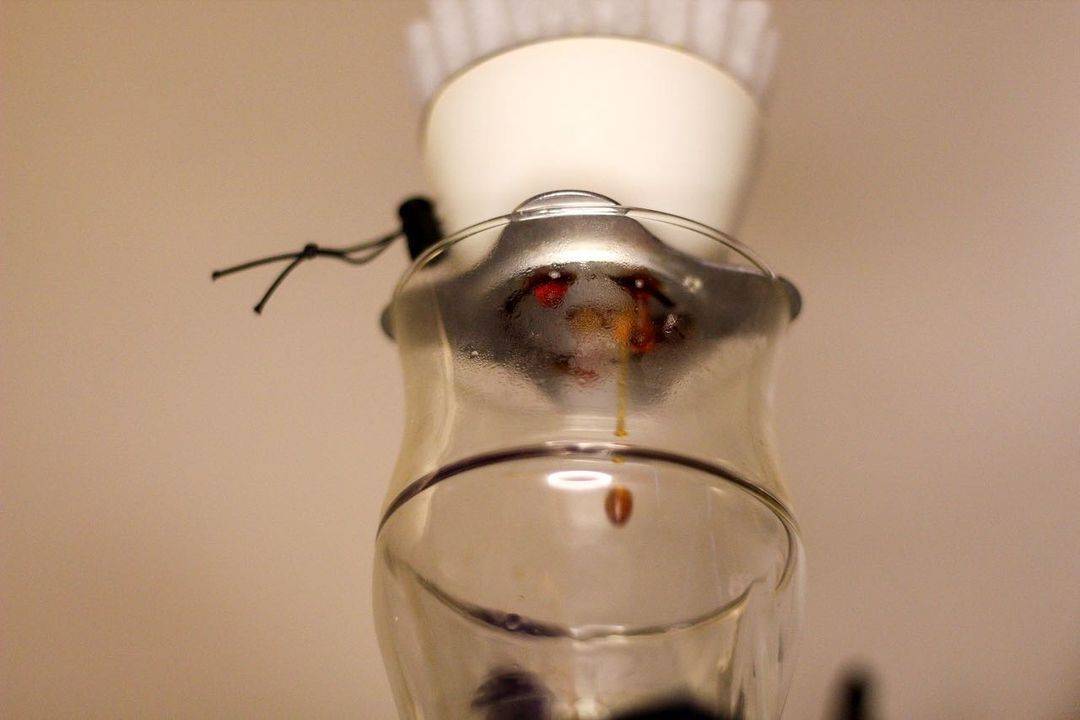
Image from Ethans Coffee Journal
Extraction, to put it simply, is the process of taking roasted coffee, grinding it into finer bits, and adding water to extract out the flavor compounds from the beans. In more mathematical terms, the ‘extraction rate’ is the percentage weight of dry coffee that’s been dissolved in the water that you are brewing your coffee with. As simple as that concept is, extraction is a complex process because of other variables that come into play that affect the final outcome.
When the pros taste brewed coffee, they’ll often discuss whether it’s under or over extracted. You’ll know when coffee is under extracted when it tastes sour, sharp and watery. This is because the sugars in the beans weren’t brewed long enough to be broken down, therefore, ending up with rather high acidity. On the other hand, over-extracted coffee can taste very bitter, with a dry, gritty mouthfeel because the water has extracted too much from the grounds
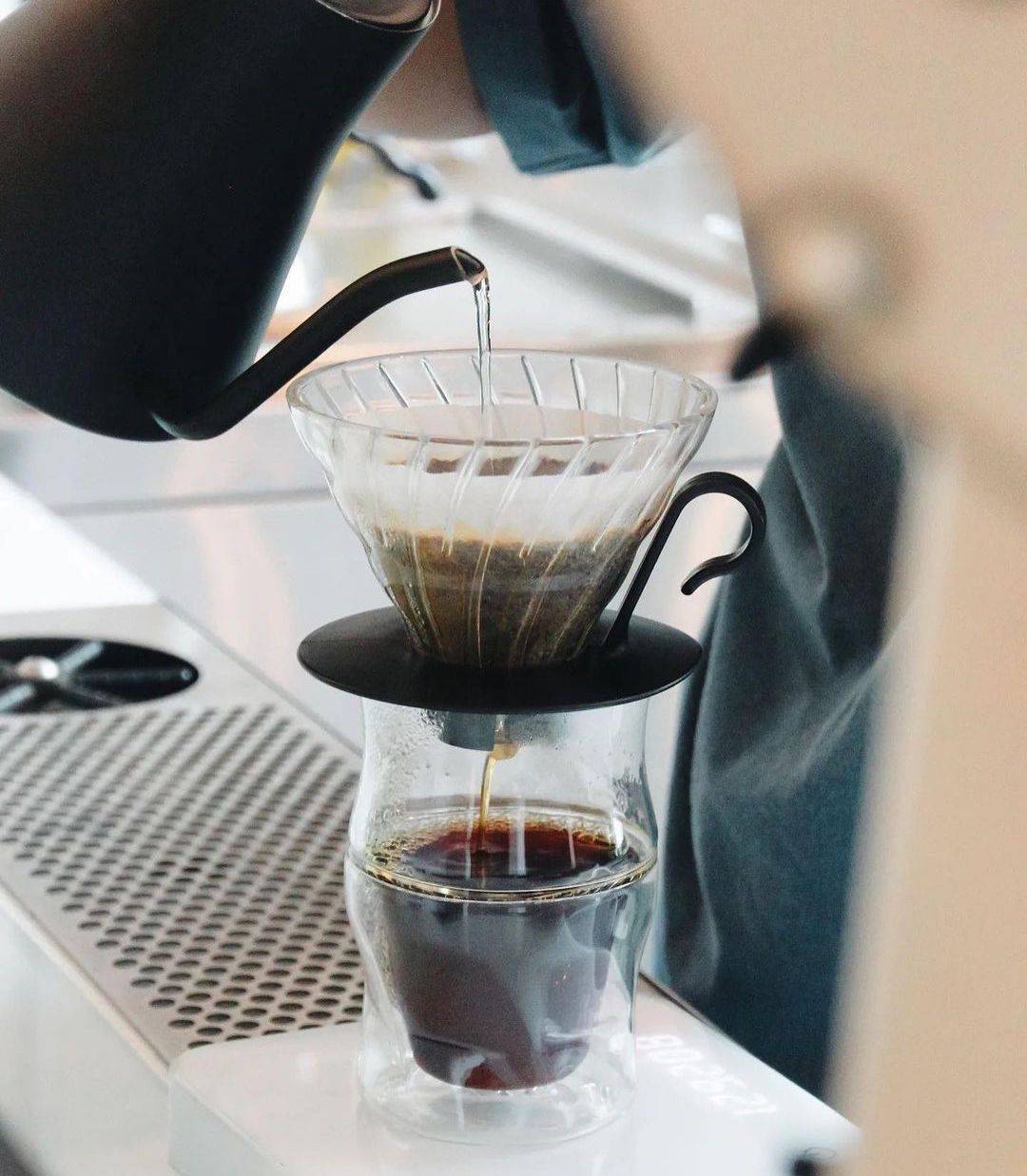
Image from Cloud Catcher Roastery
Coffee extraction involves some science. Think of it as an experiment where you’ll need to nail down a specific formula to get consistent results — meaning consistently good coffee. To extract the most ideal notes and flavor profiles from the beans, you need to make sure that other factors such as coffee to water ratio, grind size, roast of the coffee beans, steeping time, temperature of the water, and agitation, all remain constant throughout.
Although extraction and the resulting flavor is ultimately up to your taste preferences, you’ll know you’ve hit the sweet spot if your coffee is flavorful, aromatic, has balanced acidity, has hints of its natural sweetness, and has a smooth finish.
What Is Agitation?
Image from Jeffrey Polintan
Imagine you’re doing a pour over. You’re at the step where you pour hot water over coffee grounds so that it slowly drips into the collecting vessel below. Do you then use a small spoon to stir the water and coffee in the dripper or gently give it a swirl? If your answer is yes, then you’ve already practiced agitating your coffee.
Agitation simply means causing a disturbance, a turbulence if you will. Mixing our coffee can be such an innate task for many of us coffee drinkers that we’re not even aware of how it greatly affects the taste of our coffee. This is why it’s so important to be more mindful of it regardless of your brewing method. There are some coffee experts who swear by agitation to get the best extraction level, and there are purists who believe in zero agitation to achieve the best clarity. Overly agitating your coffee can result in over-extracted coffee, which tends to taste bitter. On the other hand, not agitating your coffee enough (or at all) can lead to having under-extracted beans, giving you a sour, watery cup.
Agitation can come in many forms. The simplest and most common is by stirring. Coffee experts have recommended stirring your coffee even before it has begun to bloom (during a pour over) and also after the final pour. You may also encounter what they call a “flush,” where you pour the last of the water along the edges to push down the remaining dry grounds into the mixture. Other ways to agitate your coffee can also include controlling the weight of your pour, tapping the dripper, and our favorite, swirling the brew.
Why Do We Agitate?
We agitate mainly to bring out more of the flavor of the coffee grounds we’re brewing. It helps to ensure that we get an even extraction (we’ll get to this later) and have consistently good coffee that we prefer. Agitation helps to enhance the extraction process of the coffee grounds, giving us a fuller flavor — of course, as long as you don’t overdo it.
The best way to figure out the right method and level of agitation for your coffee is simply by doing experiments. For example, do two brews at the same time and have the same consistent variables like brewer, filter, temperature, grind size, brew time, and coffee-to-water ratio. Apply agitation on one brew and leave the other as is. From there, you’ll be able to know the clear difference between the final flavor profiles of an agitated coffee and a non-agitated one. It may take a bit of trial and error at first, but it’s worth knowing what works and what doesn’t work for your preferred flavor.
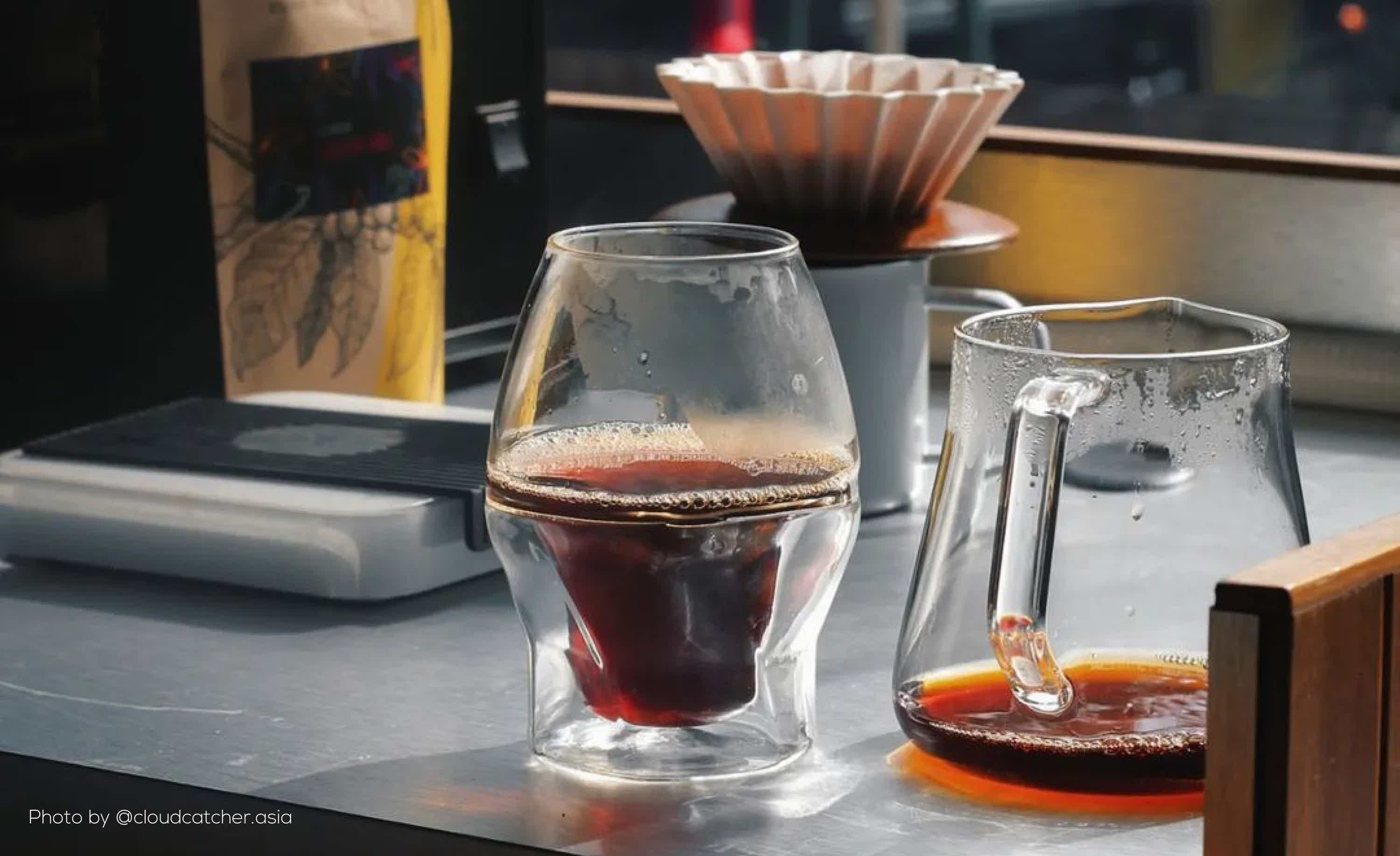
Say hello to your new coffee e-zine for the most interesting news, tips, and trends in the world of coffee.
Is There an Optimal Temperature for Coffee Extraction?

Image from Perfect Daily Grind
For the sake of simplicity, let’s talk about hot coffee for now.
The answer to the question is a resounding yes. Making coffee requires water, and since brewed coffee is 98% water, the temperature of that water plays a big part in drawing out the flavor from the grounds (which is what the process of extraction is all about). Simply put, if the water is too hot, it may lead to an over extraction and vice versa.
It is said that around 195°F to 205°F (90°C to 96°C) is where the coffee grounds most easily dissolve within the water. Do take note that water’s boiling point is at 212°F (100°C), which means it’s not ideal to use actual boiling water when brewing your coffee. If you’re just used to brewing at home, it means that after water has boiled, you can let it sit for maybe a minute before pouring it into the grounds. That will already give you that optimal temperature range to best dissolve coffee grounds. Of course, most coffee enthusiasts will argue that if you want consistency and accuracy, then it’s best to geek out by using a water thermometer or practicing some advanced tried-and-tested methods as done by the pros. This leads us to talking about how to best control water temperature.
How Do You Control Temperature?
Before we answer the “how,” we can first answer whether you really need a thermometer in the first place. Investing in a water thermometer is completely up to you. Good news is, there are many ways you can measure temperature — and a lot of it can be very affordable as well. Aside from using a thermometer, you can also check out kettles with advanced temperature control features. What we do recommend using is a handy water thermometer, since it’s something you can use regardless of which brewing method you choose to do.
Pro-Tips for Controlling Water Temperature
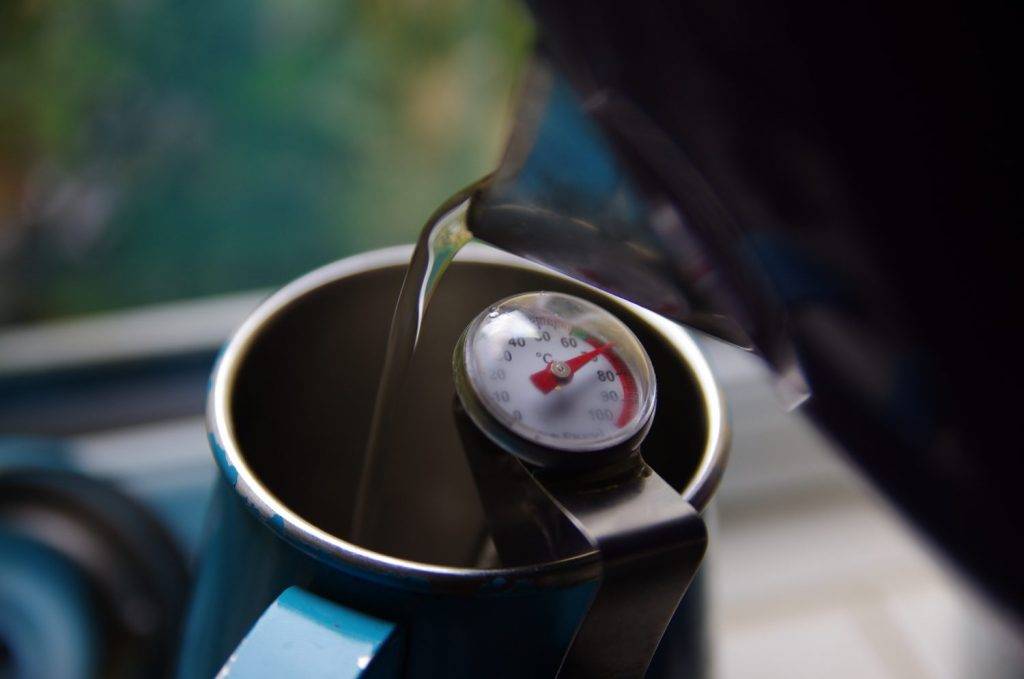
Image from bayawe.com
- Preheat your brewer: During the extraction process, the flavors of your coffee change depending on the brewing temperature. Since most brewers act as a heat sink which can suck the heat away from the brewing process, it’s important to preheat your brewer to maintain a consistent brew temperature throughout the brewing process. To preheat a brewer, simply pour hot water in/over the brewer (optionally you can swirl the water in it too) and discard the water before brewing your coffee.
- Boil double the volume of water than required: Instead of only boiling the exact volume of water you need for your brew, boil double the amount. For example, if you only need exactly 300g of water, you can heat up to 600g instead. This helps to maintain the water temperature throughout the brewing process, especially when using longer brewing methods like pour over (which often take 3-4 minutes). The additional heated water can also be used to preheat your brewer and pre-wet the filter before brewing.
Temperature, Agitation, and Extraction — How Does It All Come Together for Your Coffee?

Image from Perfect Daily Grind
Let’s start with this mindset: good beans deserve a good (if not great) ‘brew recipe’. When we say ‘brew recipe’, all factors come into play — big and small — and we should be mindful about how to control and measure each as such.
Of course, we don’t want you driving yourself crazy with the numbers down to the last decimal point. The main purpose of controlling variables at first is for you to establish your preferred recipe. In time, being mindful of these variables helps in recognizing nuances in the coffee you drink and allows you to tweak each variable to tease the best flavors from your favorite brews.
We also have to recognize that these three aren’t the only variables that you can experiment with. There’s also the bean varietal, grind size, coffee-to-water ratio, water quality, and brew time. Think of all these variables as a giant puzzle that you have to piece together and the prize is the satisfaction of drinking a delicious, hand made cup of coffee.
There might not be a shortcut to having consistently good coffee, but trust us, the patience and practice is well worth it! It’s this experimentation and depth of coffee that makes the journey (and the destination) all the more worthwhile.



